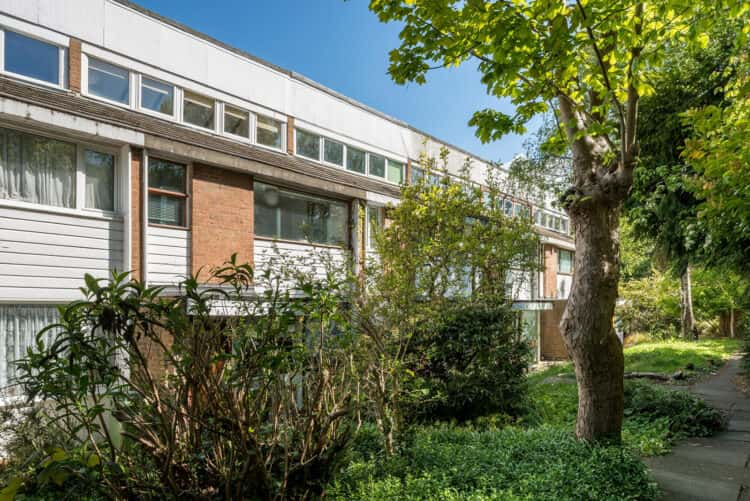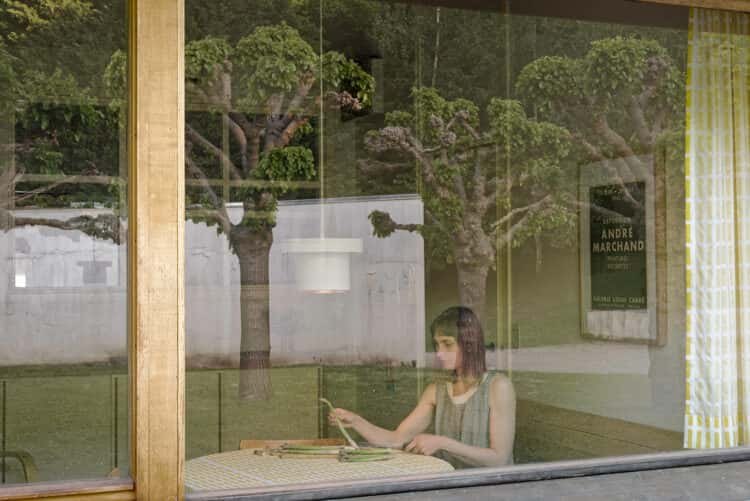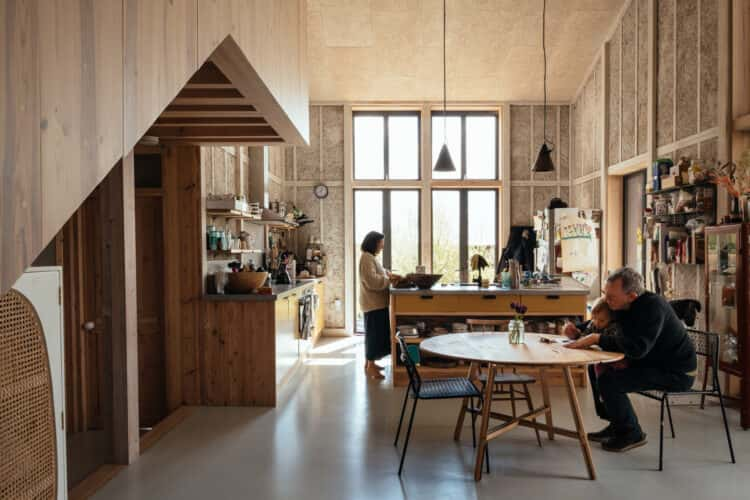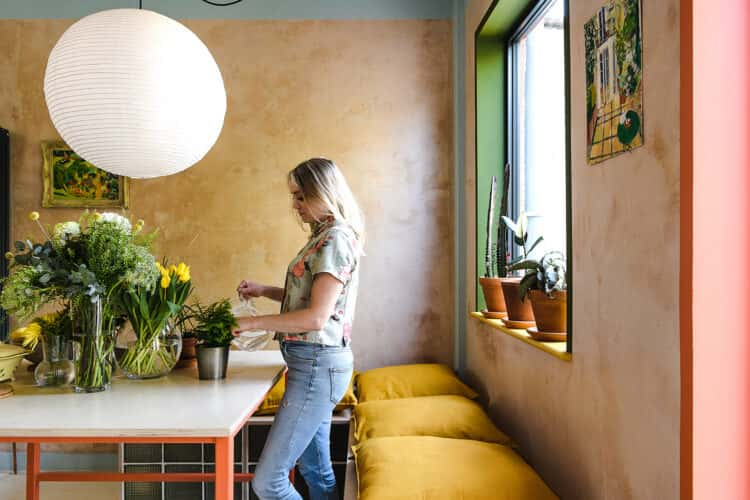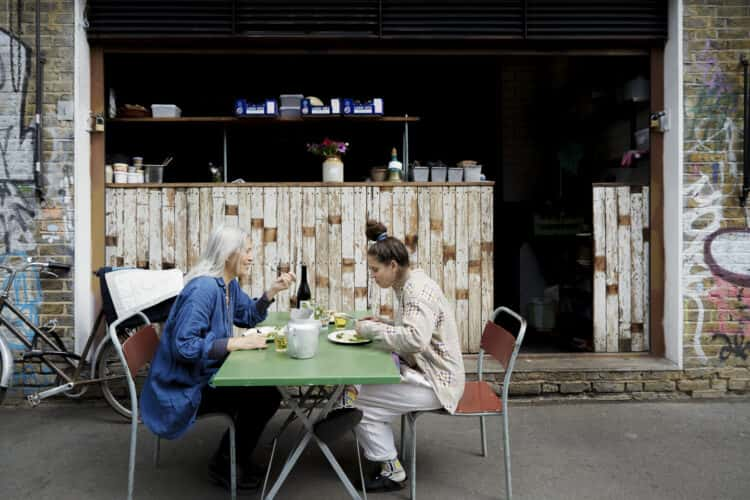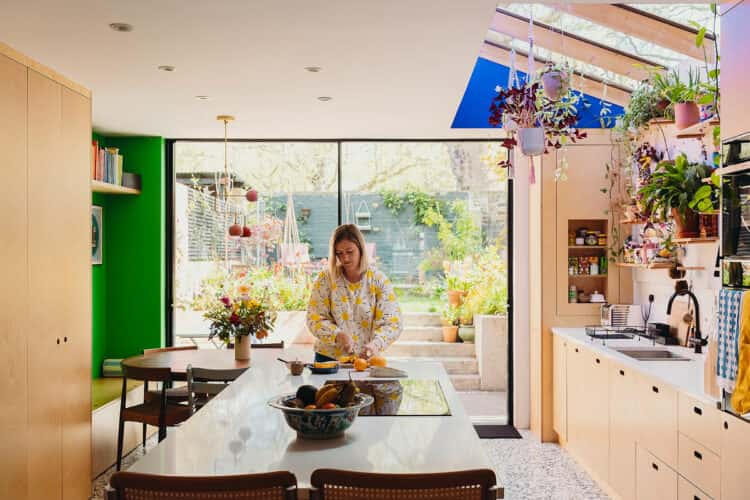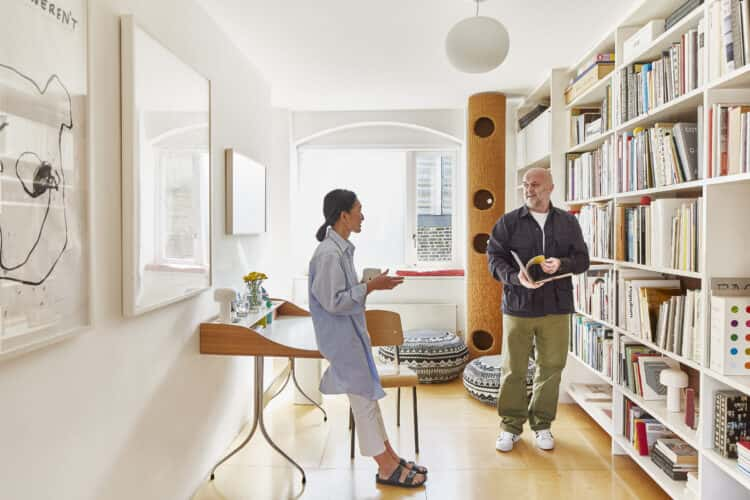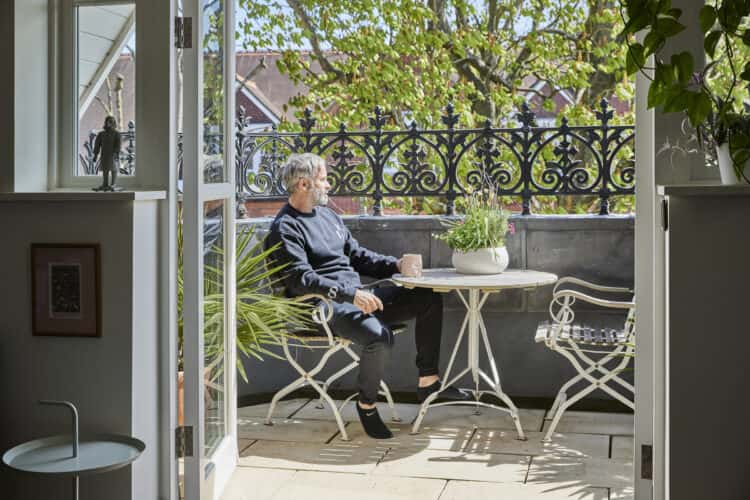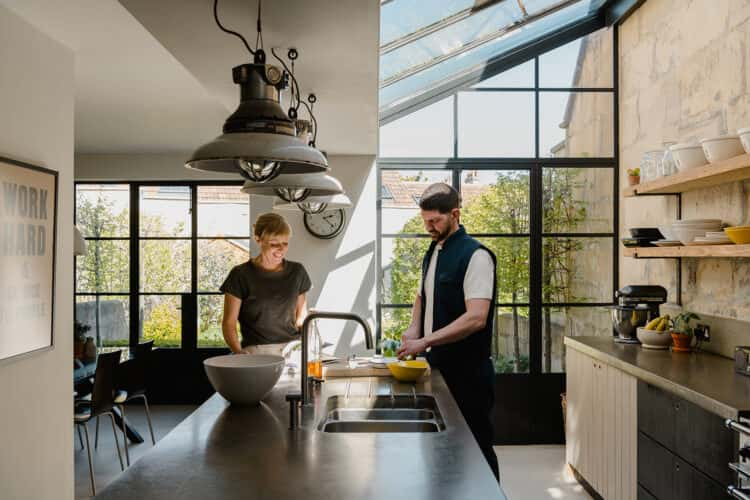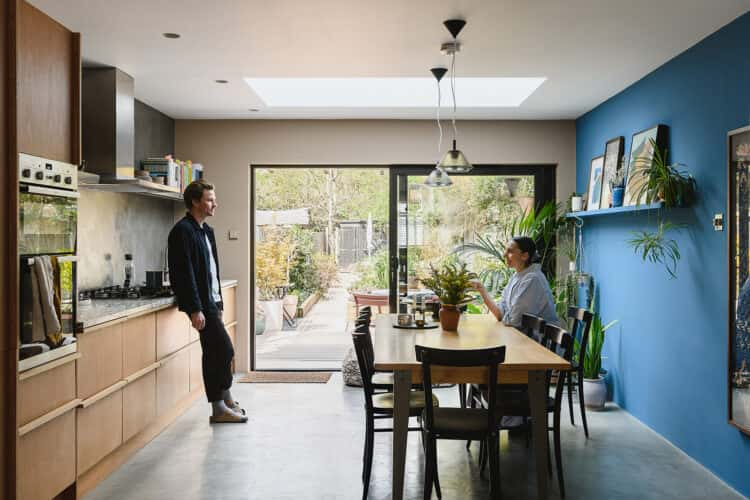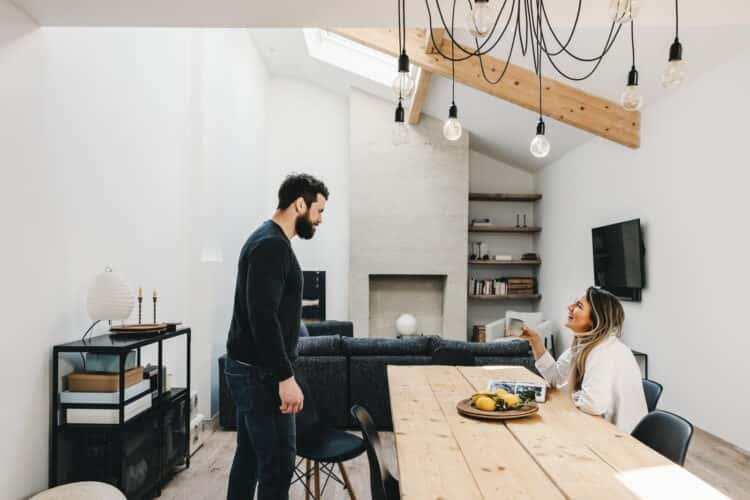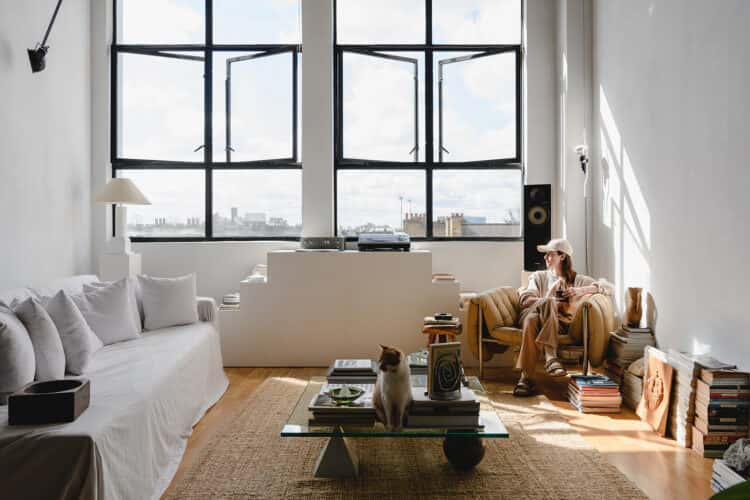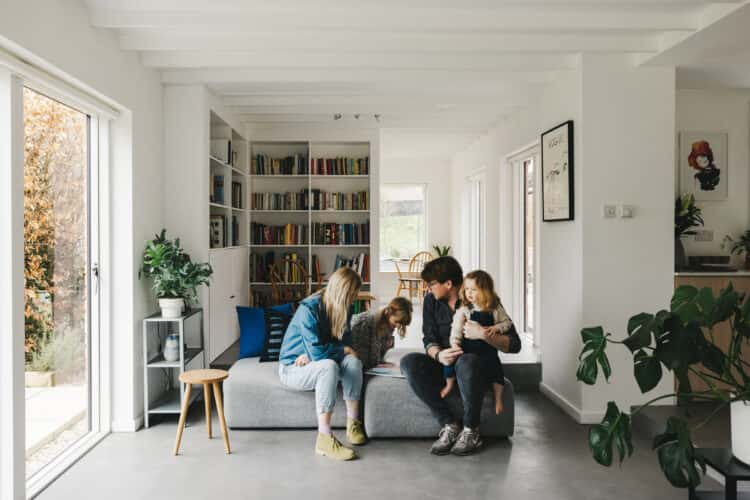Artist and writer Susan Johanknecht on life in a lovingly preserved mid-century house in Forest Hill
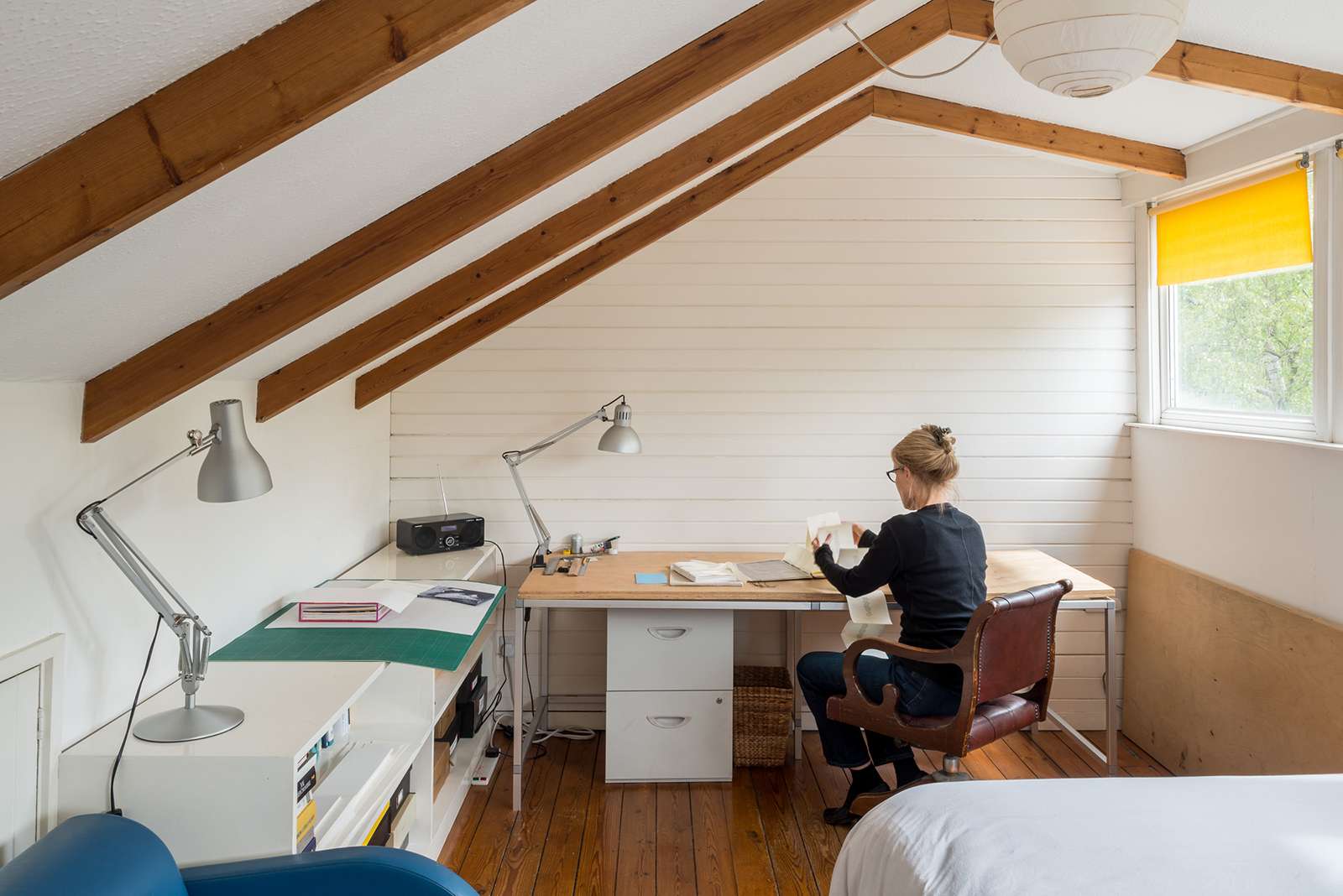
It was this ease of living that appealed to Susan Johanknecht, an artist and writer who taught the MA Book Arts course at Camberwell College of Art and runs the experimental Gefn Press. In 2008, she bought one of the last unmodified homes on the estate, which had had only two previous owners and was complete with original blue-painted doors and sashless windows.
Since then, the house has been as much a family home for Susan and her two children as it has been a space for her artistic practice – a letterpress machine takes pride of place in the living room. Now, as it comes on to the market, Susan considers her time at the house, reflecting on the sense of space and light, and how she will miss the unique Hyndewood community.
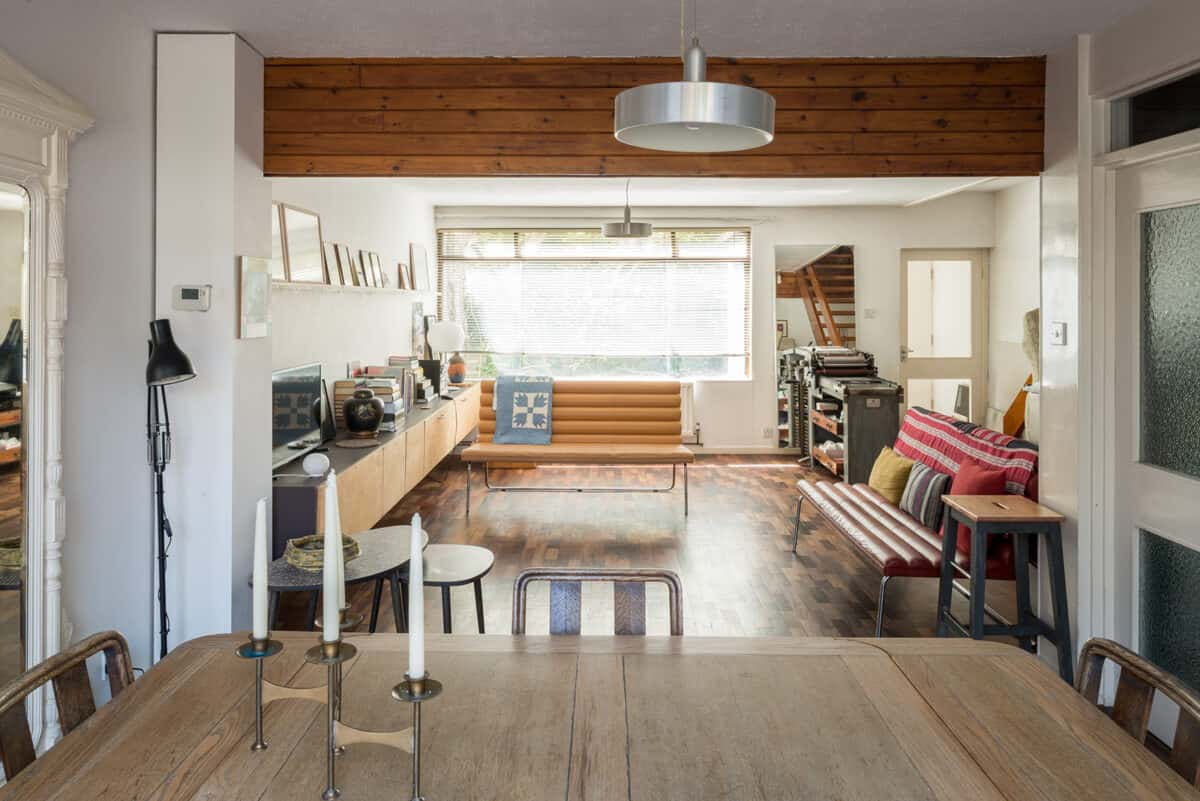
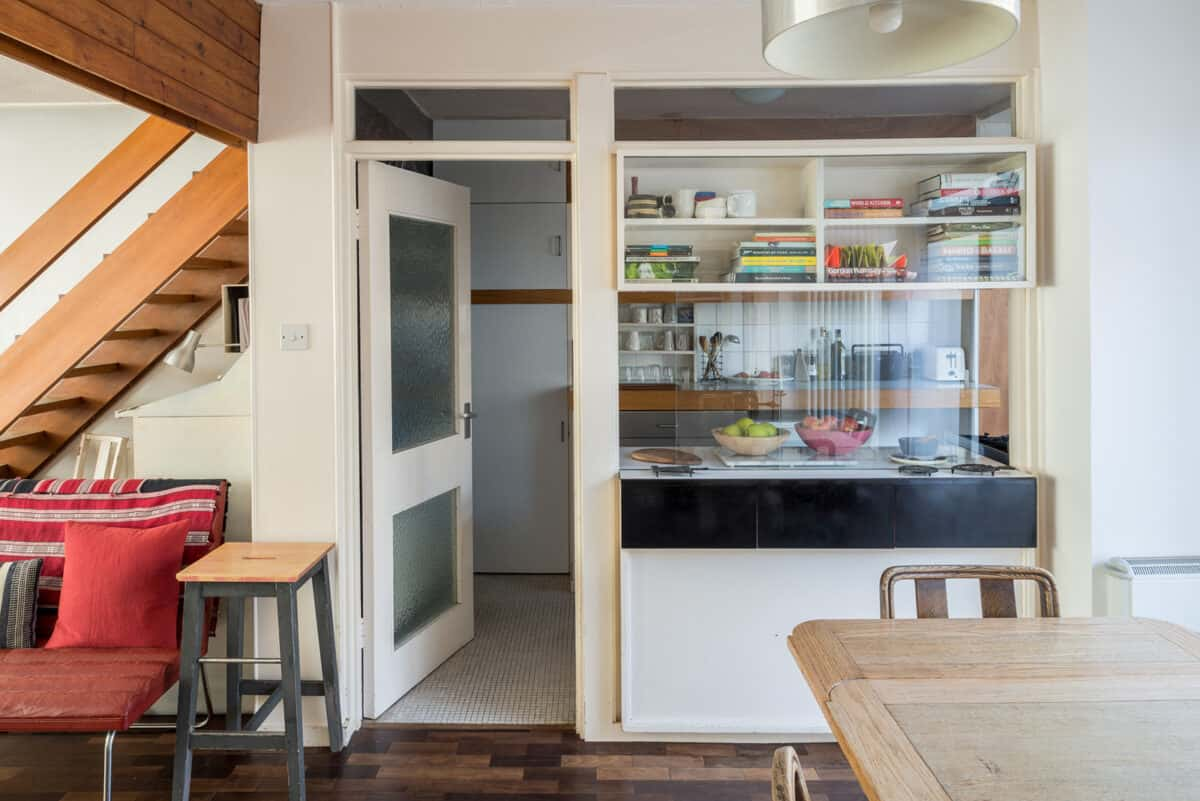
“I was living in an Edwardian house in Herne Hill when I first saw Hyndewood. At the time, I was teaching at Camberwell, travelling back and forth to my parents in the States and looking after two teenage children – all while working on some big book projects.
“I saw immediately that our lives and our lifestyle would fit in with the house. There were a lot of us back then – my daughter, son, me and the letterpress – but we were able to move in without having to change anything. The spaces had been so carefully thought through.
“When I was younger, I was an apprentice at the Janus Press in Vermont. The founder, Claire Van Vliet, was influenced by Scandinavian design in her own house and workspace; I was very struck by this, having been brought up in a suburban tract house. I suppose I was remembering that when I found myself drawn to that similar aesthetic here.
“This house is particularly special because of the way Starrett made use of the light. There’s something invigorating about moving through the house – the light is different on each level. It can be quite dramatic. The architecture really makes you aware of the light and the changing seasons.
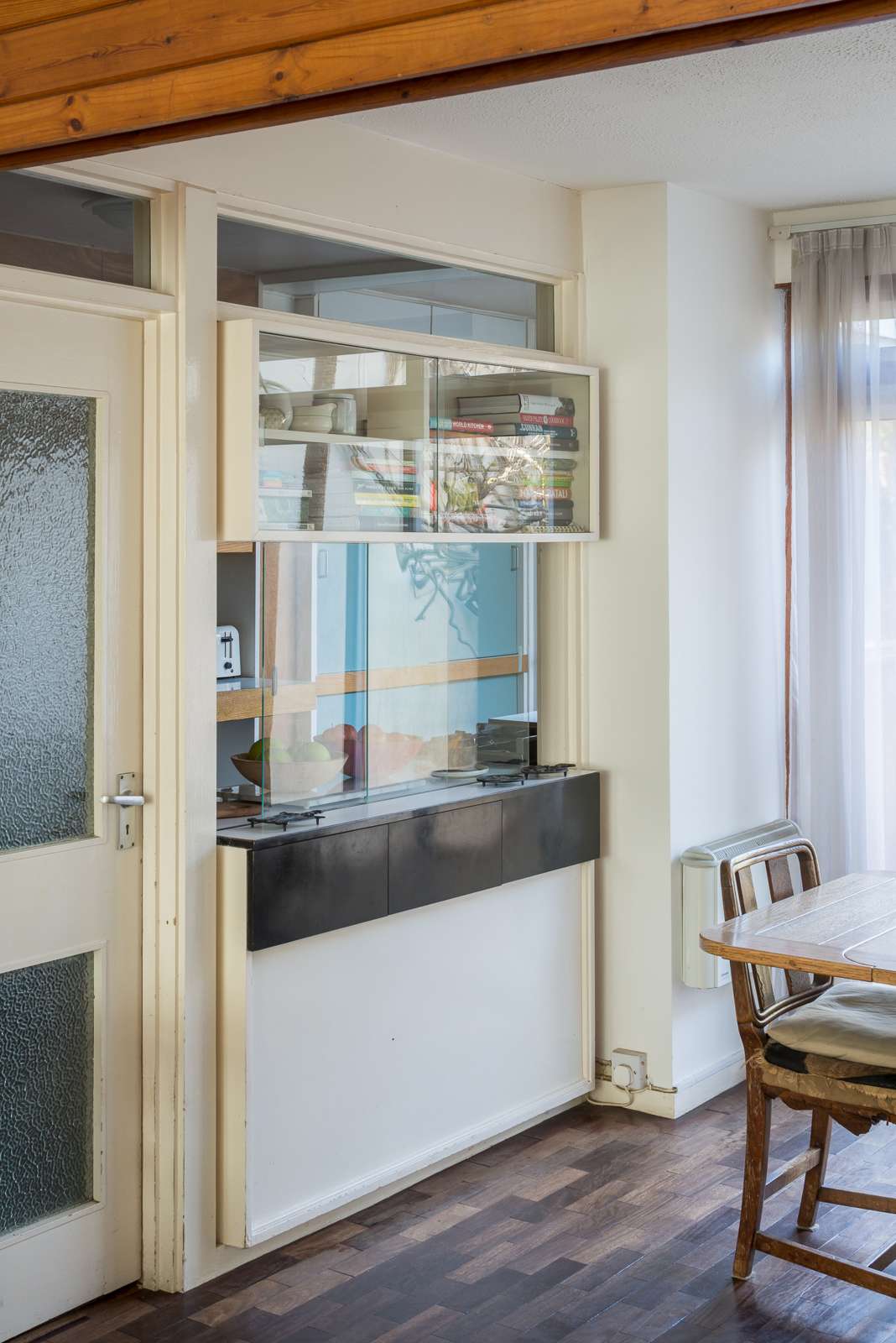
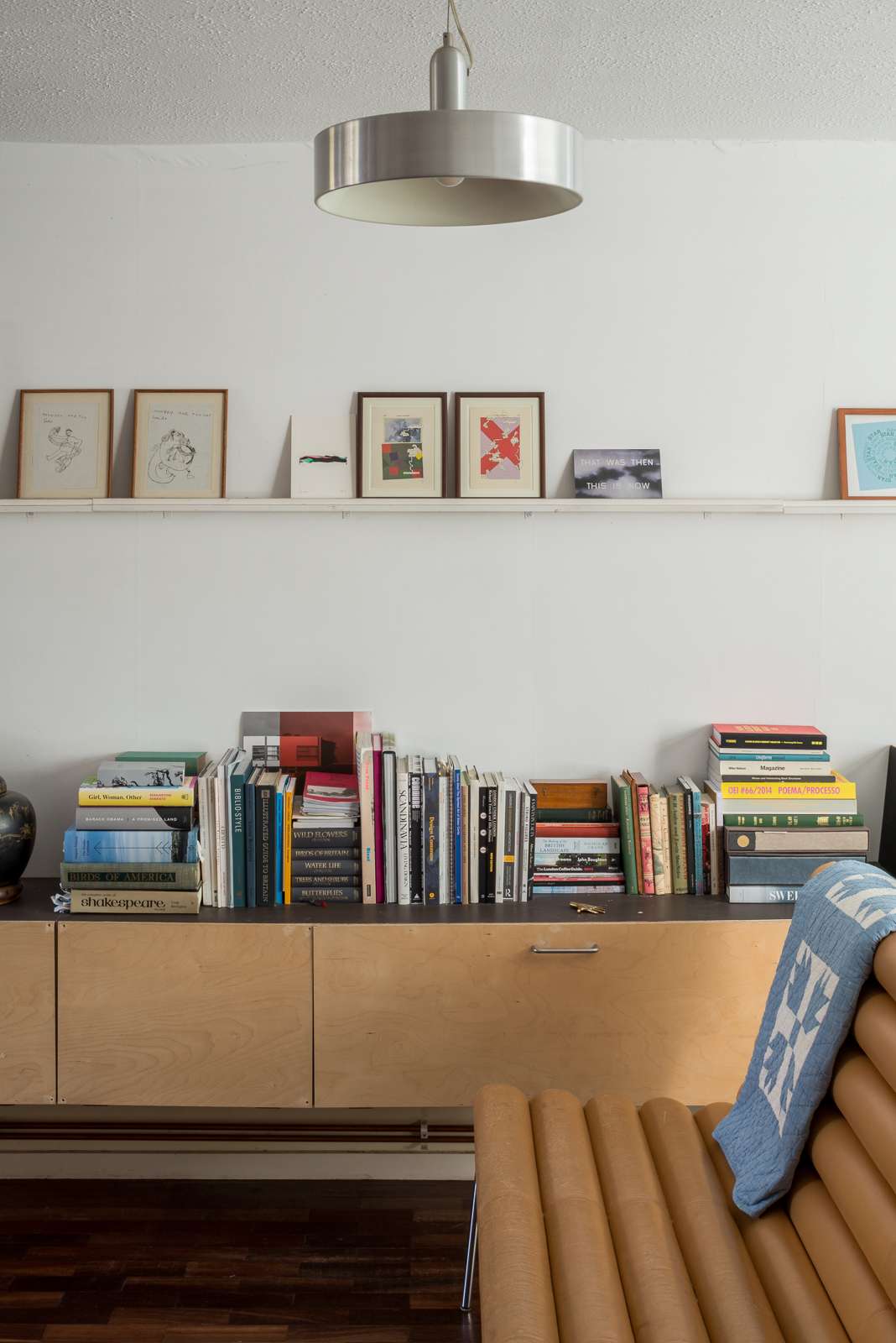
“Very little has changed here since the house was built in 1963. There are still original features like the delicate curving wood of the staircase and the hatch through to the kitchen. You can sit at the dining table and chat with whoever is cooking.
“Throughout the house, there’s a real sense of openness and fluidity. It makes you feel at ease, as all good interiors should do.
“Everything here has been accumulated over time through life, my family or work. The antique Arts and Crafts table I bought from a second-hand shop in Hampstead 30 years ago, and the large mirror was here when I bought the house – apparently it was very fashionable back in the Sixties to have these decorative mirrors painted white. There’s no reason why it should work in a mid-century house but it does.
“There are also coffee tables designed by a friend of mine, Alison Milner, and contemporary Swedish sofas. When I’m printing, I bring an old door down from the top room and put it on the sofas, so I can lay all the sheets out to dry when I pull them off the press. It’s a very flexible house.
“The artwork has also been accumulated through family and friends. There are paintings by my brother, ceramics from California that were bought by my parents, and an urn that my grandmother had, which must have come from Japan while her sons were there in the war. Then there are also drawings that my son and I did, and works by Tom Phillips, Ian Hamilton Finlay, and Denise Hawrysio, who taught at Camberwell with me.
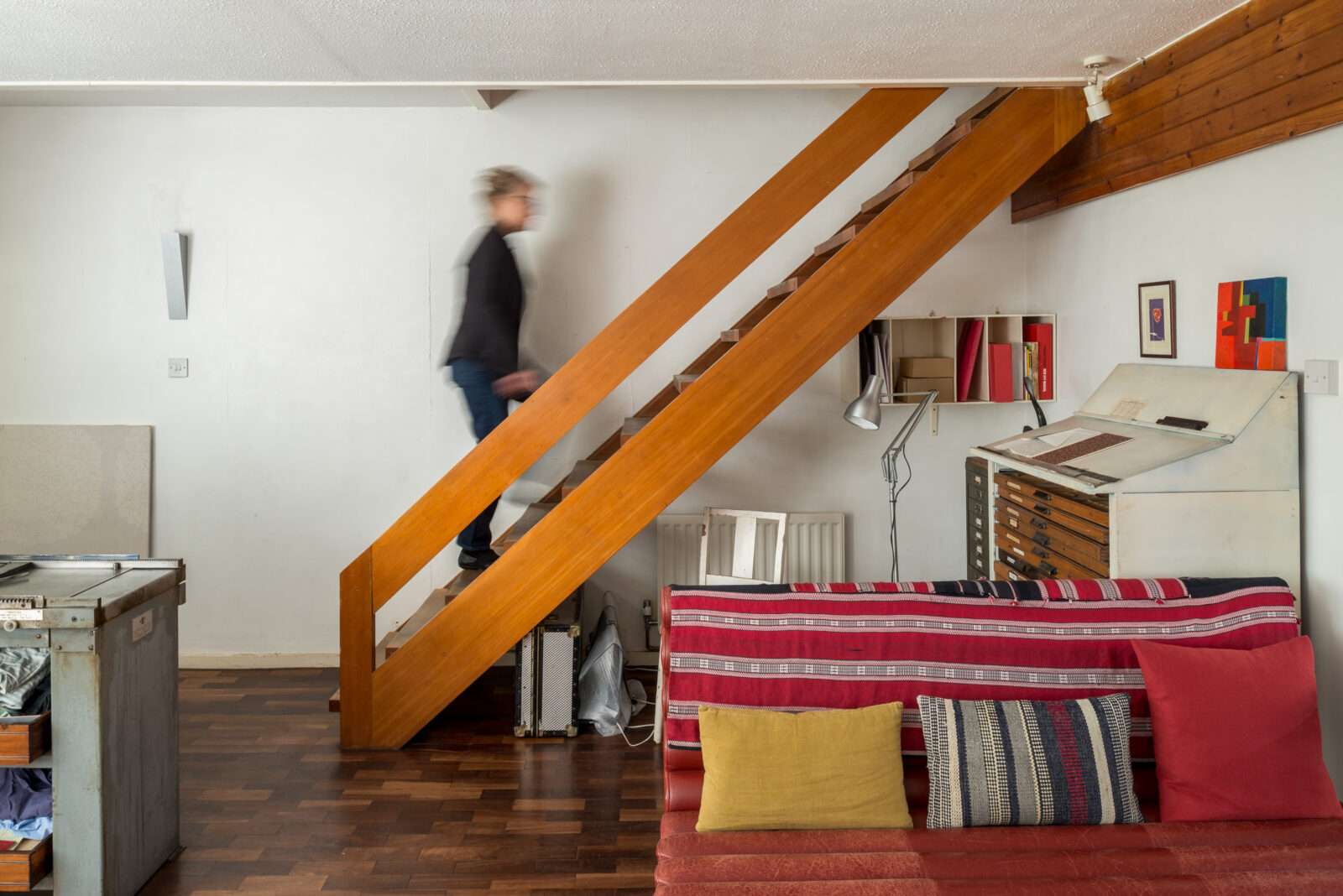
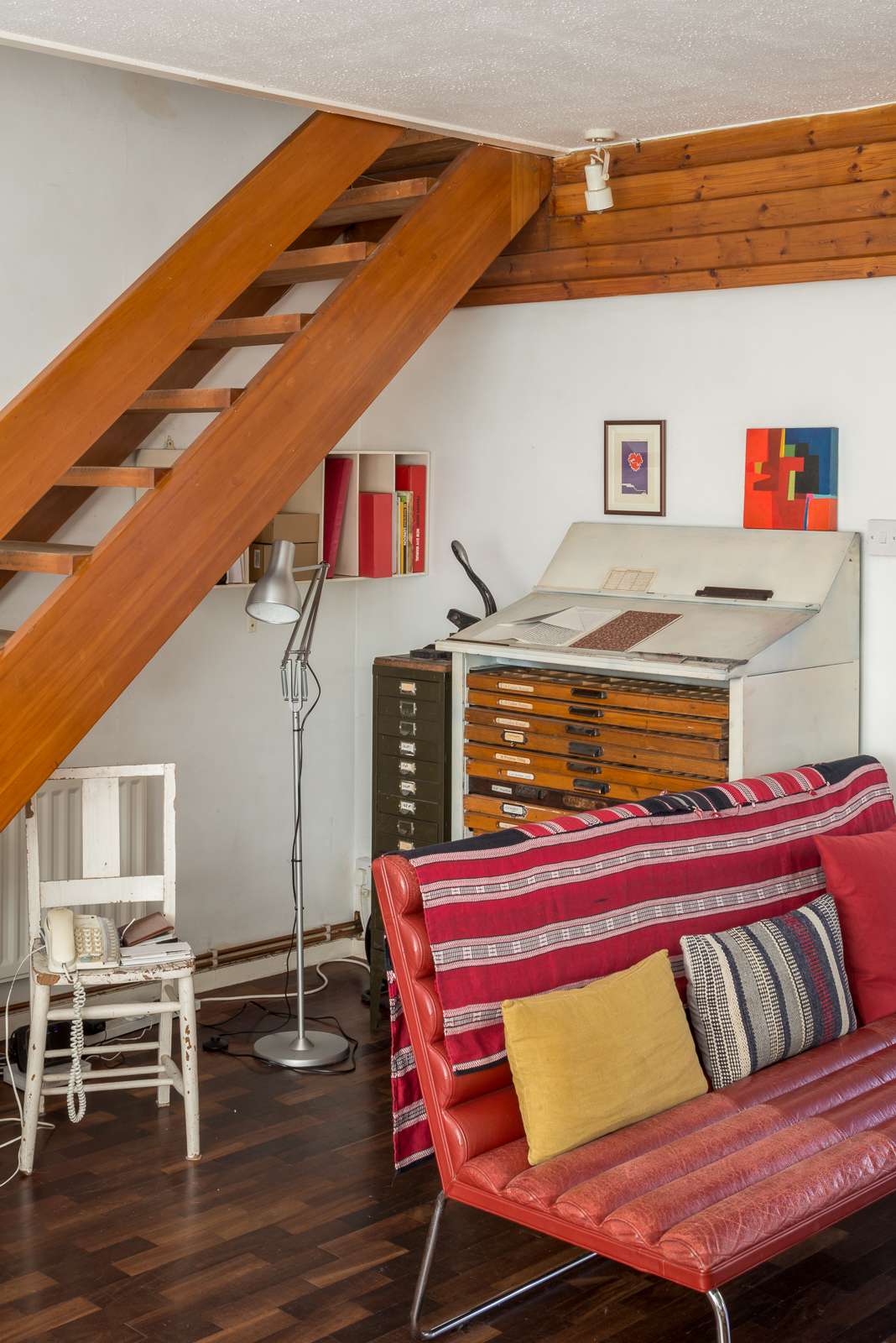
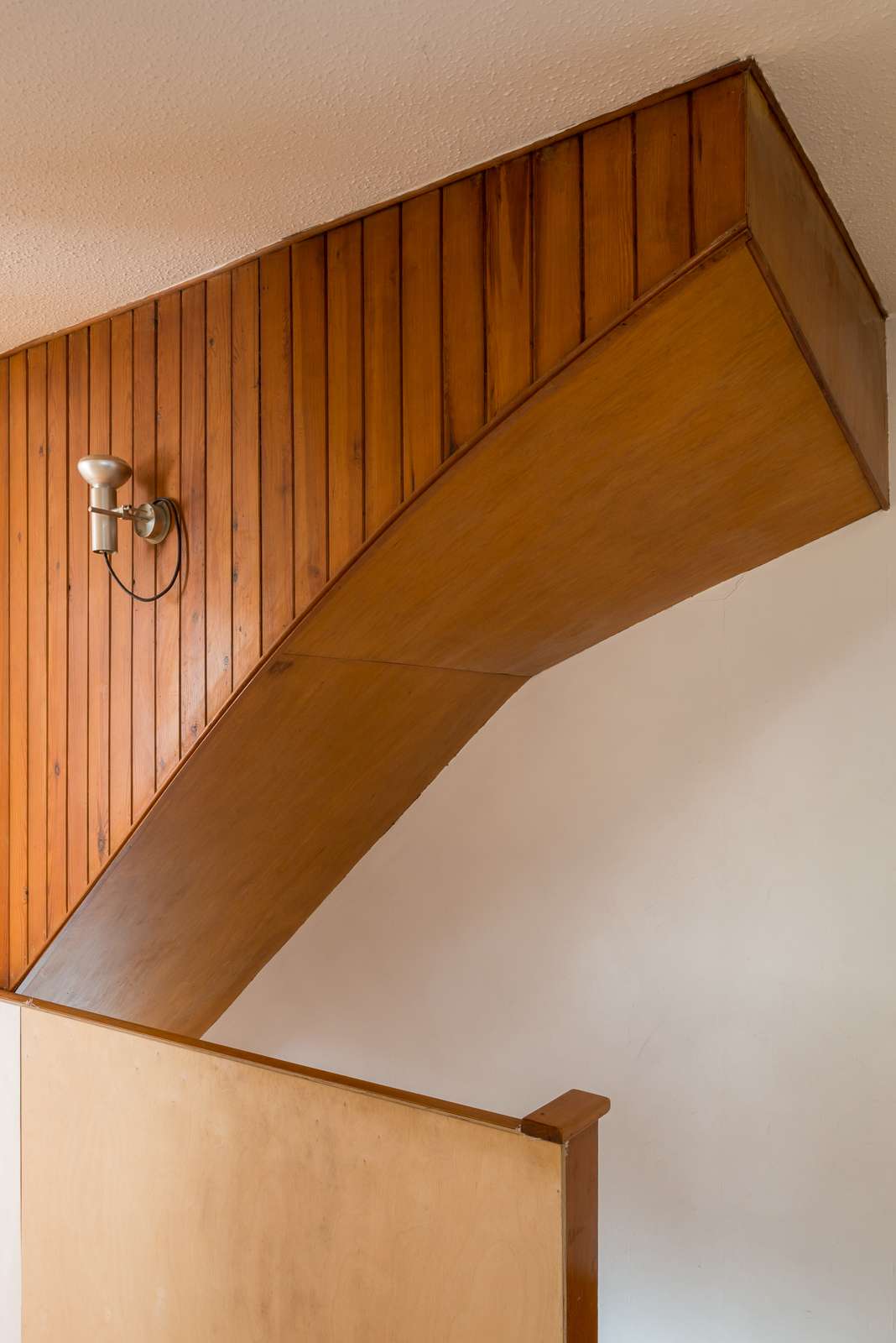
“I think my favourite place in the house is my little bedroom. There’s something about being able to look straight out of the window from the bed in the morning and see the birds and the squirrels in the trees. It’s so peaceful.
“The house has had a strong impact on my work. Being able to have that small room, where I sleep, and the spare bedroom as a studio – as well as the press downstairs – has been really important for my practice. I can leave my work out or lay pages out on the floor, as I did with part of a project during lockdown, and the light in that top room is perfect for binding or working on drawings.
“It feels like it’s the right time for a change, though. My son and his partner live in Haringey and they’ve asked me to move north. I’m not working in Camberwell anymore, so I don’t have the constraint of needing to commute in, and my daughter is now living in New York.
“I’m thinking of somewhere even more modern or contemporary than here, but I will miss this house, particularly the sense of light and space.
“And I will miss the Hyndewood community. There’s a very active residents’ association. Around the time I arrived, we reclaimed the large parking lot – there’s now grass and a place for the children to build treehouses – and we are in the process of buying all the garages to make workshops.
“The original owner was very prominent in the association and a lot of the meetings took place here. Apparently, he interviewed the people that I bought the house from to see if they would look after it and treat it well. It’s a nice part of its legacy.
“Forest Hill may have changed a lot since I moved here – there’s now the Overground, and new delis and food shops – but this house has stayed the same. I hope whoever buys it will love it as much as I have, and perhaps they will be able to take it to the next stage, restoring it and making it more energy-efficient.”
